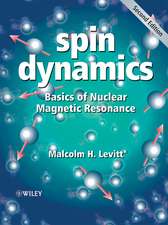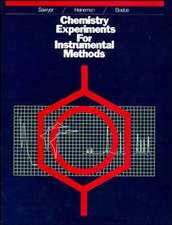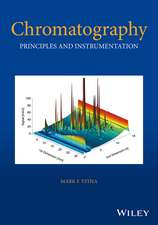Monitors of Organic Chemicals in the Environment: Semipermeable Membrane Devices
Autor James N. Huckins, Jim D. Petty, Kees Booijen Limba Engleză Paperback – 29 oct 2010
| Toate formatele și edițiile | Preț | Express |
|---|---|---|
| Paperback (1) | 626.86 lei 6-8 săpt. | |
| Springer Us – 29 oct 2010 | 626.86 lei 6-8 săpt. | |
| Hardback (1) | 631.69 lei 6-8 săpt. | |
| Springer Us – 2 mai 2006 | 631.69 lei 6-8 săpt. |
Preț: 626.86 lei
Preț vechi: 737.49 lei
-15% Nou
Puncte Express: 940
Preț estimativ în valută:
120.03€ • 123.82$ • 99.48£
120.03€ • 123.82$ • 99.48£
Carte tipărită la comandă
Livrare economică 20 februarie-06 martie
Preluare comenzi: 021 569.72.76
Specificații
ISBN-13: 9781441939692
ISBN-10: 1441939695
Pagini: 240
Ilustrații: XV, 223 p.
Dimensiuni: 155 x 235 x 13 mm
Greutate: 0.34 kg
Ediția:Softcover reprint of hardcover 1st ed. 2006
Editura: Springer Us
Colecția Springer
Locul publicării:New York, NY, United States
ISBN-10: 1441939695
Pagini: 240
Ilustrații: XV, 223 p.
Dimensiuni: 155 x 235 x 13 mm
Greutate: 0.34 kg
Ediția:Softcover reprint of hardcover 1st ed. 2006
Editura: Springer Us
Colecția Springer
Locul publicării:New York, NY, United States
Public țintă
ResearchCuprins
to Passive Sampling.- Fundamentals of SPMDs.- Theory and Modeling.- Study Considerations.- Analytical Chemistry Related to SPMDs.- Bioassay of SPMD Extracts or Diluents.- Comparisons To Biomonitoring Organisms.- Selected Case Studies.- SPMD Calibration Data.- SPMD Bibliography.
Notă biografică
JIM PETTY, Regional Science Program Manager, US Geological Survey (GS) Central Region BRD, received his Ph.D. in organic chemistry in 1975 from the University of Missouri-Columbia. Prior to assuming his current regional role, Dr. Petty conducted and directed research in all aspects of environmental chemistry from the development of analytical methods for emerging contaminants of concern and the identification of unknown contaminants to fate studies to better define the bioavailability/bioconcentration of contaminants and their potential adverse effects on organisms. Furthermore, he has developed and applied systems and approaches for ensuring science quality. Dr. Petty has served as the Chief, Environmental Chemistry Branch, USGS’s Columbia Environmental Research Center; Director of Analytical Research at the Fermenta Animal Health Company; he was the Chief of the Quality Assurance Branch of the US Environmental Protection Agency¢ s Environmental Monitoring Systems Laboratory-Las Vegas; and the Chief Chemist of the US Fish and Wildlife Service’s National Fisheries Contaminant Research Center. Dr. Petty is an adjunct professor of chemistry and member of the doctoral faculty of the University of Missouri-Columbia and has directed the thesis research of two doctoral students and one masters student. He has authored or co-authored more than 100 peer-reviewed publications, numerous presentations at scientific meetings, and six U.S. Government patents covering a wide array of research topics.
JAMES HUCKINS began his career rather abruptly after being drafted into the US Army’s Chemical Corps, while enrolled in geochemistry graduate school at the University of Missouri at Rolla. Afterwards, he was employed as an analytical methods chemist by the U.S. Fish and Wildlife Service’s (F&WS) Fish Pesticide Research Laboratory. During this period he developed or co-developed a number of widely used analytical methods for organic contaminants and hisresearch enabled the selective separation of toxic planar halogenated aromatic compounds from environmental matrices. Then his research interest broadened to include environmental chemistry and he served as leader of the Fate of the Chemical Section at the F&WS’s/National Biological Survey’s National Fisheries Contaminant Research Center. More recently, he has served as leader of the Chemical Fate and Dynamics Section of the US Geological Survey’s Columbia Environmental Research Center. He is the author or co-author of four US Government Patents on passive sampling (including SPMDs) and five other US Government Patents related to chromatographic systems. During his career he has authored or co-authored about 90 peer-reviewed articles/publications and has received more than 15 awards for his research. These awards include the US Department of Interior’s meritorious Service Award and the Society of Environmental Toxicology and Chemistry’s Government Service Award for his pioneering research on passive sampling technologies.
KEES BOOIJ was educated as a physical chemist and chemical technologist. He obtained his PhD in chemical oceanography in 1989 at the University of Groningen (The Netherlands) on solute exchange between sediment and water. Since 1989 he was employed as a scientist at the Royal Netherlands Institute for Sea Research, working on the fate of organic contaminants in the marine environment. After some initial unsatisfactory experiences with batch extraction techniques for determining dissolved organic contaminant concentrations in sea water, he became interested in the evaluation of semipermeable membrane devices (SPMDs) for determining dissolved contaminants in both sea water and air. Early on he recognized the importance of boundary layers in exchange processes related to passive samplers. In a seminal paper on SPMDs, he demonstrated the dramatic effects on SPMD sampling rates of significant difference in facial flowvelocities and highlighted methodology to account for this environmental variable. Over the past few years, his main interest has been to model the basic processes that govern the kinetics of solute exchange between passive samplers and water/air, aiming to strengthen passive sampling technology as a practical tool for contaminant fate assessment. He has authored or co-authored 25 publications in the peer-reviewed literature.
JAMES HUCKINS began his career rather abruptly after being drafted into the US Army’s Chemical Corps, while enrolled in geochemistry graduate school at the University of Missouri at Rolla. Afterwards, he was employed as an analytical methods chemist by the U.S. Fish and Wildlife Service’s (F&WS) Fish Pesticide Research Laboratory. During this period he developed or co-developed a number of widely used analytical methods for organic contaminants and hisresearch enabled the selective separation of toxic planar halogenated aromatic compounds from environmental matrices. Then his research interest broadened to include environmental chemistry and he served as leader of the Fate of the Chemical Section at the F&WS’s/National Biological Survey’s National Fisheries Contaminant Research Center. More recently, he has served as leader of the Chemical Fate and Dynamics Section of the US Geological Survey’s Columbia Environmental Research Center. He is the author or co-author of four US Government Patents on passive sampling (including SPMDs) and five other US Government Patents related to chromatographic systems. During his career he has authored or co-authored about 90 peer-reviewed articles/publications and has received more than 15 awards for his research. These awards include the US Department of Interior’s meritorious Service Award and the Society of Environmental Toxicology and Chemistry’s Government Service Award for his pioneering research on passive sampling technologies.
KEES BOOIJ was educated as a physical chemist and chemical technologist. He obtained his PhD in chemical oceanography in 1989 at the University of Groningen (The Netherlands) on solute exchange between sediment and water. Since 1989 he was employed as a scientist at the Royal Netherlands Institute for Sea Research, working on the fate of organic contaminants in the marine environment. After some initial unsatisfactory experiences with batch extraction techniques for determining dissolved organic contaminant concentrations in sea water, he became interested in the evaluation of semipermeable membrane devices (SPMDs) for determining dissolved contaminants in both sea water and air. Early on he recognized the importance of boundary layers in exchange processes related to passive samplers. In a seminal paper on SPMDs, he demonstrated the dramatic effects on SPMD sampling rates of significant difference in facial flowvelocities and highlighted methodology to account for this environmental variable. Over the past few years, his main interest has been to model the basic processes that govern the kinetics of solute exchange between passive samplers and water/air, aiming to strengthen passive sampling technology as a practical tool for contaminant fate assessment. He has authored or co-authored 25 publications in the peer-reviewed literature.
Caracteristici
Authors are pioneers of sampling approach and developers of globally applied semipermeable membrane devices (SPMDs) Book summarizes the work of 15 years of research reported in almost 200 refereed papers and critically discusses their implications Boosts readers’ understanding of how passive samplers such as SPMD function by examining basic exchange processes that mediate the concentration of SVOCs in a sampling matrix Book delineates both fundamental theory and modeling needed for full development of new technology, while providing a practical guide for its proper application Includes supplementary material: sn.pub/extras








